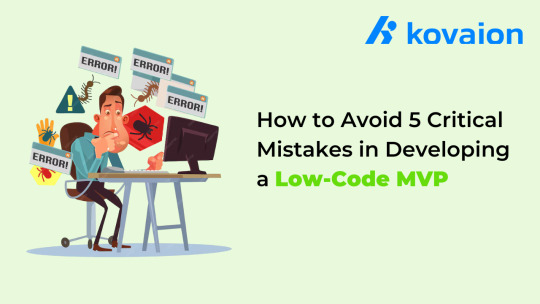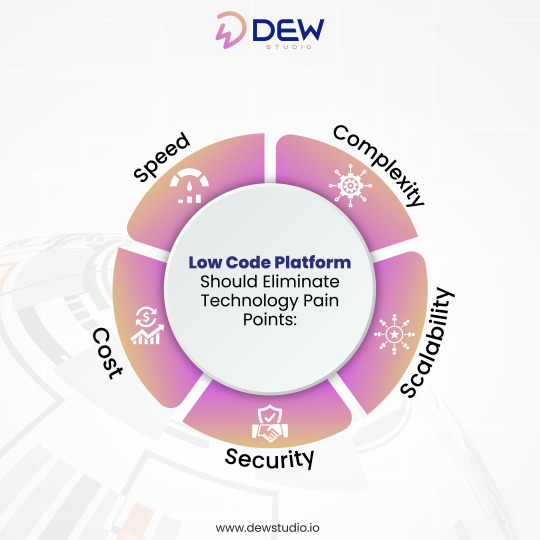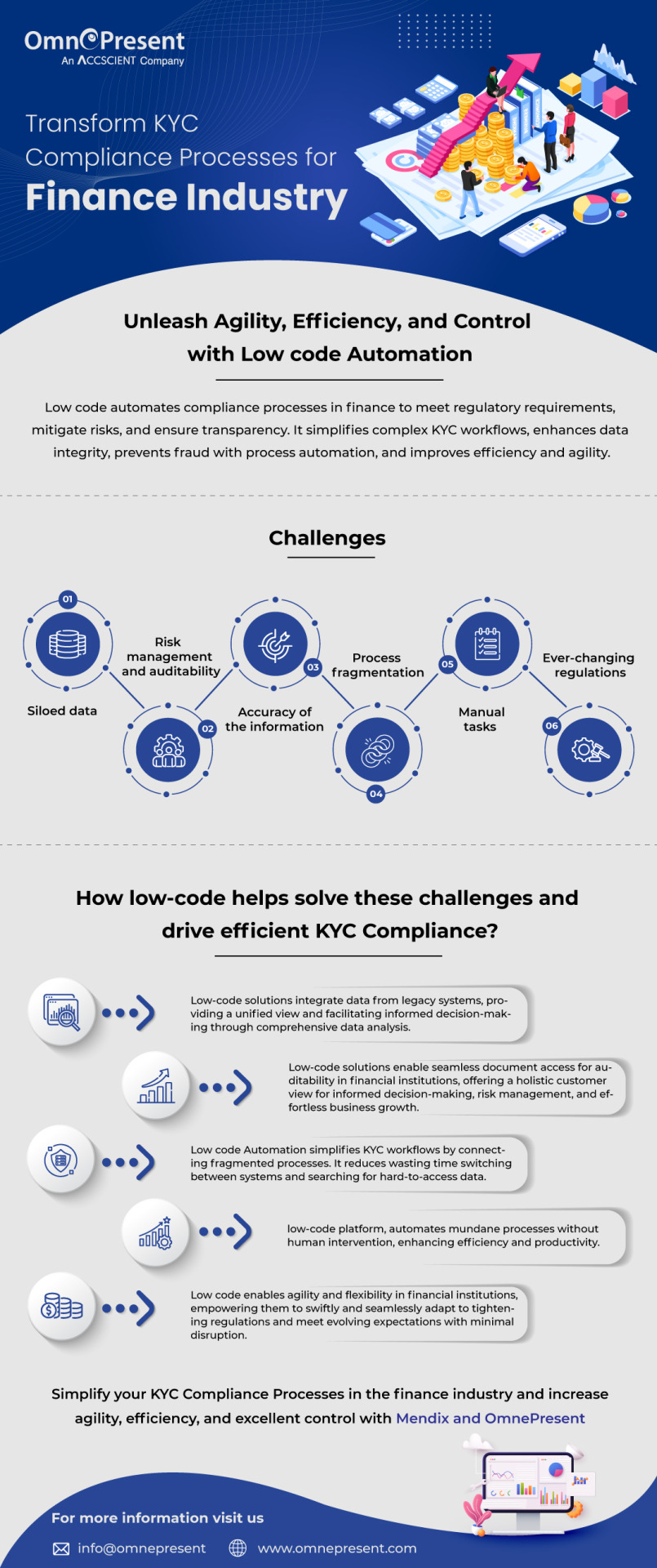#low-code
Explore tagged Tumblr posts
Text
The Future of ERP Integrations: How Low-Code and No-Code Platforms Are Changing the Game
Enterprise Resource Planning (ERP) systems’ primary goal has been to enhance business operations through streamlining critical processes such as finance or supply chain management. However, to be honest, the integration of the ERPs with other tools has not always been an easy task. It was really a nightmare for companies to integrate ERPs with the other tools. Time-consuming development cycles, huge IT costs, and some complex coding requirements totally turned ERP integrations into a mess for businesses.
But, here are low-code and no-code platforms like Odoo ERP that are quite the game-changers in ERP integrations. These contemporary remedies have made it much easier, faster, and cheaper to connect ERPs with other business applications. Let me explain to you how they are altering the landscape.

Breaking Down the Buzz: What Are Low-Code and No-Code Platforms?
Low-code platforms enable users to develop applications by designing visually with less code. They include visual design immediate productivity capabilities that promise to fast-track work for a broad spectrum of users in the organization.
No-code platforms take the automation level a little further allowing even average users like IT, ERP, engineers, business analysts, and business owners to create their systems the way they want without having to write a single line of code, and thus they can focus on tasks that matter.
By doing this, businesses just simply change their budget from standard, long, and costly ERP integrations to the cloud.
How Low-Code & No-Code Are Transforming ERP Integrations
Speed Like Never Before - Traditional ERP integrations used to be a time-consuming process and often took weeks, sometimes even months. The use of low-code/no-code tools has become revolutionary and businesses can now develop integrations in just a few days or hours. At the same time, pre-built Connectors and Templates, and automation tools certainly make the life of developers easier.
Reduced IT Dependency - In the past, ERP integrations necessitated the participation of IT teams or even external developers. Over time, the implementation of the low code/no code approach has increasingly led to newcomers getting involved. For instance, the business user can take up the role of the IT team, and as a result, the bottleneck is removed, and the tech teams do more strategic tasks.
Cost Savings Galore - The cost of hiring developers for custom ERP integrations can be hefty. On the other hand, Low-code/no-code solutions indeed offer the benefit of not needing much real developer input. As a result, such systems can be set up and maintained by non-technical employees alone.
Flexibility & Scalability - Companies are getting innovative and growing while software needs are also changing. With the help of low-code/no-code technologies, organizations can accomplish this by simply changing the integration on the go (so to speak). This way, there is no need to reinvent software every time there is a need for change.
Enforced Security & Compliance - No-code/low-code transformational strategies that are inherently secured and compliant mean that ERP integrations will be fulfilled with the required regulations hassle-free for IT teams.
Who’s Leading the Low-Code/No-Code Revolution?
Several players are shaking up the ERP integration landscape. Platforms like Odoo, Zapier, Mendix, OutSystems, and Microsoft Power Automate are leading the charge, making ERP integrations accessible to businesses of all sizes.
Is This the End of Traditional ERP Integrations?
No, it's not. Traditional coding is still very much a necessity for complex and highly customized integrations. However, low-code and no-code platforms are help in most cases to save time, money, and energy.
Odoo: A Top Low-Code ERP
Odoo is one of the best low-code ERP platforms, offering flexibility, automation, and easy customization. With its modular design and drag-and-drop tools, businesses can streamline operations without deep coding expertise.
Final Thoughts: The Future is Here
The days of painful, drawn-out ERP integrations are fading. Low-code and no-code platforms like Odoo are making ERP connectivity easier than ever, allowing businesses to focus on growth rather than technical roadblocks. If your company hasn’t explored these tools yet, now’s the time to jump in!
The future of ERP integrations is fast, flexible, and code-free—are you ready for the Odoo upgrade?
Read more: Click Here
3 notes
·
View notes
Text
Explore the leading low-code and no-code platforms empowering businesses to build applications faster, lower development costs, and boost agility with minimal coding.
0 notes
Text
Empowering Innovation with Low-Code/No-Code Platforms: Revolutionizing Software Creation.
Sanjay Kumar Mohindroo Sanjay Kumar Mohindroo. skm.stayingalive.in Explore how low-code/no-code platforms drive innovation. Learn how rapid prototyping, easy customization, and broad access reshape software creation in modern enterprises. #LowCode #NoCode Low-code and no-code platforms let teams build apps fast. They make it easy for non-programmers to craft custom tools. This post explains…
#AI#business#Clear Work#Custom Apps#Democratization#Leadership#Low-Code#News#No-Code#Productivity#Rapid Prototyping#Sanjay Kumar Mohindroo#Software Creation#tech innovation#technology
0 notes
Text
Ferramenta Gratuita para Criar Aplicativos: Top 5 Opções em 2025 [Guia Completo]
A Revolução Silenciosa da Criação de Apps ao Alcance de Todos Imagine um mundo onde a capacidade de transformar uma ideia brilhante em um aplicativo funcional não está mais restrita a programadores experientes ou a empresas com orçamentos vultosos. Um mundo onde empreendedores, pequenos negócios, educadores e criativos podem dar vida às suas visões digitais com agilidade e sem barreiras…
#Criação De Apps#Democratização Da Tecnologia#Desenvolvimento de aplicativos#Empreendedorismo digital#Ferramentas Gratuitas#Inovação Tecnológica#Low-Code#No-Code#Plataformas De Criação#Transformação Digital
0 notes
Text
AI coding tools vs low code
The rapid development of generative AI in traditional code development (third-generation language use) has had a lot of impact, with claims of massive productivity improvements. Given that developer productivity has historically been the domain of low-code tooling, this has led me to wonder whether the gap is shrinking and whether we are approaching a point where the benefits of low-code tools…
0 notes
Text
Low-Code and No-Code Platforms: The Future of App Development?

Technology is evolving rapidly, transforming industries and daily life. From AI and machine learning to blockchain, cybersecurity, and IoT, innovations are reshaping how we work and interact. Key trends include 5G, edge computing, cloud computing, quantum computing, and robotic process automation (RPA), enhancing speed, efficiency, and automation. AR/VR, biometric technology, and human augmentation are revolutionizing user experiences, while cyber-physical systems and big data analytics optimize decision-making. These advancements drive progress across healthcare, finance, transportation, and more, making 2025 a pivotal year for tech-driven change.
https://smartmeta.net/low-code-and-no-code-platforms-the-future/
1 note
·
View note
Text






Some very well attended Mendix meetup and business conference events
0 notes
Text
How to Avoid 5 Critical Mistakes in Developing a Low-Code MVP

In the ever-evolving landscape of technology, low-code platforms have emerged as powerful tools for rapidly developing Minimum Viable Products (MVPs). These platforms enable quick prototyping and development with minimal coding, allowing businesses to test ideas, gather user feedback, and pivot as needed. However, even with the advantages of low-code development, there are common pitfalls that can undermine the effectiveness of an MVP. Here are five mistakes to avoid while building your low-code MVP, along with insights on how Kovaion’s low-code platform can help you sidestep these issues.
1. Neglecting User Research and Validation
Mistake: One of the most common mistakes in building an MVP is neglecting thorough user research and validation. Developers often jump straight into building the product without fully understanding the needs and pain points of their target audience.
Solution: Start by conducting comprehensive user research to identify the core problems your MVP aims to address. Utilize surveys, interviews, and market analysis to gather valuable insights. With Kovaion’s low-code platform, you can quickly iterate on designs and features based on real user feedback, ensuring your MVP effectively addresses actual user needs.
2. Overcomplicating Features
Mistake: Another mistake is overcomplicating the MVP with too many features. An MVP should focus on delivering the core value proposition and solving a specific problem, rather than trying to include every possible feature.
Solution: Stick to the essential features that provide immediate value to your users. Use Kovaion’s low-code platform to build and deploy these core features efficiently, and plan future enhancements based on user feedback and market demand. This approach helps maintain focus and avoid feature creep.
3. Ignoring Scalability and Performance
Mistake: Failing to consider scalability and performance during MVP development can lead to issues as your product gains traction. Many developers overlook how their MVP will handle increased traffic or user load.
Solution: While an MVP doesn’t need to be fully scalable, it’s crucial to build it with scalability in mind. Kovaion’s low-code platform offers robust performance and scalability options, allowing you to design your MVP in a way that can handle future growth and demand without major overhauls.
4. Underestimating Integration Needs
Mistake: MVPs often need to integrate with existing systems, databases, or third-party services. Underestimating these integration needs can lead to delays and functionality issues.
Solution: Identify all necessary integrations early in the development process and ensure they are accounted for. Kovaion’s low-code platform simplifies integration with various systems and APIs, streamlining the process and reducing the risk of integration-related problems.
5. Forgetting to Plan for User Feedback
Mistake: Many teams overlook the importance of planning for user feedback and iteration. An MVP is meant to be a learning tool, and without a clear plan for collecting and analyzing feedback, you may miss valuable insights.
Solution: Implement feedback mechanisms within your MVP and establish a process for analyzing and acting on user input. Kovaion’s platform allows for rapid adjustments and updates based on user feedback, helping you refine your product iteratively and effectively.
Conclusion
Building a successful low-code MVP involves more than just leveraging the latest technology. By avoiding these common mistakes and leveraging the capabilities of Kovaion’s low-code platform, you can develop an MVP that not only meets your initial goals but also provides a solid foundation for future growth and success.
With careful planning, user-focused development, and strategic use of low-code tools, you can create an MVP that delivers real value to users and sets the stage for continued innovation and improvement.
0 notes
Text
0 notes
Text
no-code - Is that the next Technology 'Magic Eraser'?

It's important to approach no-code platforms, like anything else, with a balanced perspective. Read More. https://www.sify.com/software/no-code-is-that-the-next-technology-magic-eraser/
0 notes
Text
The Rise of Low-Code and No-Code Solutions in Business
Explore how low-code and no-code applications can help companies build unique applications without the help of technical skills.
For many years, there have been two routes that businesses take on their way to application development: buying ready-made apps from an external vendor or building these apps from scratch using skilled developers and codes.
However, in the last few decades, the scenarios have changed with the rise and growth of sophisticated low-code/no-code (LC/NC) development. This is a great alternative that brings the power of application development to users across different industries.
Further, low-code/no-code (LC/NC) applications provide a close fit to different business requirements, as they can be implemented quickly and cost much less than a system developed in-house.
So, the use of LCNC tools brings the potential for increased user accessibility, which promotes more innovation and relieves the load on IT departments. The adoption of LCNC platforms is the next step in making application development simple and accessible to everyone.
In this article, we will explore more about low-code and no-code through use cases and how they can benefit your business.
1. What is Low-code?
Low-code is a way of designing and building programs that use simple graphical tools and embedded functionality to eliminate the need for traditional or pro-code writing. Users may reduce their workload by utilizing low-code platforms that use tools to speed up and simplify certain operations.
Visit AITechPark for cutting-edge Tech Trends around AI, ML, Cybersecurity, along with AITech News, and timely updates from industry professionals!
0 notes
Text
The Top 10 Open Source Low-Code and No-Code Development Platforms In today’s fast-paced digital landscape, the demand for rapid application development is higher than ever. Low-code and no-code development platforms have emerged as game-changers, allowing individuals and businesses to create powerful applications without extensive coding expertise. For those who prefer open-source solutions, we’ve curated a list of the top 10 open-source low-code and no-code development platforms to help you navigate the landscape effectively.
0 notes
Text

#lowcode#software#technology#trending#low code development#low code app development platform#low-code#low code
0 notes
Photo

Transform KYC compliance process for finance industry with Low-code
The Know Your Customer (KYC) compliance process plays a vital role in the finance industry, ensuring regulatory compliance and mitigating risks associated with money laundering and fraud. However, traditional KYC processes can be time-consuming, manual, and prone to errors. Embrace low code development and automate KYC process. Explore our insightful infographic to discover new possibilities in KYC and DigitalTransformation. Contact us to drive operational efficiency and regulatory compliance.
#low-code development services#low-code automation#Low-Code#lowcode app development#low-code consulting
0 notes
Text

This is what happened after 3.1 isn't it?
#hsr#phaidei#phaidei nation I humbly offer thee a low quality meme to cope with the doomed yaoi that was going on#phainon#honkai star rail#fellas is it gay for your red coded rival to your blue coded rival to clasp his hands over your own after you stabbed him#due to thinking he was the objective of your revenge quest#pull your sword deeper in and by consequence add to your proximity while smiling and fondly say “Found you.”?#Was it casual when you had an insanely charged and homoerotic scene in the hot baths that had you face down on the ground at his feet?#no but seriously these two have me in a chokehold#what do you MEAN you told him your precise weak spot just in case you became you turned against his cause#and his presumed future EMIYA Archer coded shadow self immediately went precisely for it?#and you KNOW you'll die with a wound in that weak spot in your back and you told him about it anyway#and you tell people to keep an eye on him after you go to meet your fate and then ask him to watch over your people#and he says he'll work hard to learn your language#AND FINALLY#“If there's a chance in the next life you should come visit my library.” WHAT IF I PERISHED ON THE SPOT?!#that's their “See you in the next world.”; their “Do stay alive. I wish you the best of luck.”;#their “I would have really liked just doing laundry and taxes with you.”; “You were a wonderful experience. You were everything.” etc etc#they make me ill (positive)#also I find it so funny that as a KevinSu shipper in HI3rd I went into Star Rail expecting for the dynamic to be more coded with Anaxa#only for Phaidei to hit literally all of my points and favorite tropes in a ship and by consequence my head with a steel chair lol#really hope we see Mydei again soon because literally the first thing Phainon does after he's gone is talk about him all the time#he is a professional yearner and I respect him for it (especially since I too miss Mydei as if he's Odysseus going off to war and sea#for 20 years and I'm Penelope waiting at the shores of Ithaca)#also sorry for the low quality screenshot I was literally too invested in the quest to try and take better ones#gotta love how Hoyoverse is always giving the Kaslanas some of the best romances in their games and ESPECIALLY so if they're queer#myphai
740 notes
·
View notes
Text

Invitation I'm hosting a small Mendix Coffee and (low) Code over lunch time end Nov. We'll be building a Todo app together.
If you're interested in learning a low-code tech and you're based in Cape Town then think about joining me
https://www.meetup.com/mendix-south-africa/events/296738222/?utm_medium=referral&utm_campaign=share-btn_savedevents_share_modal&utm_source=link
0 notes